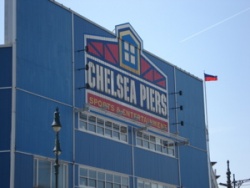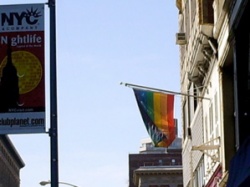The Social Geography of Chelsea
From The Peopling of NYC
Chelsea's social makeup has always been tied to its piers. Dating back to 1907, three years before its opening in 1910, many famous ships, such as the Lusitania and Mauretania, were docked in Chelsea Piers. Though it was a welcoming stop to many European lines, the Piers were at the same time the first stop for many immigrants, specifically the Italian, Irish and Spanish. Once a ship had docked, its immigrant passengers were transferred to a ferry to be transported to Ellis Island or Freedom. By 1933, the Great Depression had hit, and Chelsea's use for transatlantic trade diminished. The Chelsea Piers had gone from "The most remarkable urban design achievement of their day," according to The New York Times, to "Today the Chelsea Piers are shabby pathetic reminders of a glorious past," words said at an attempt to replace Chelsea Piers with a highway running down the Hudson coast. However, the project failed, and in May 1992 was leased by The Chelsea Piers Management, Inc., which proposed to turn it into a sports and entertainment complex. Three years later, the Chelsea Piers started opening its stages once again.
The reborn Chelsea Piers as a fun place to be reflects the community's new attitude and feeling. As the gay community began to transform Chelsea, immigrants unable to afford the high rent moved out, and an influx of college educated whites took their place. Chelsea is now a relaxed and calmed place to live, open to people of diverse ethnicity. Just as Chelsea became a more luxurious and wealthy neighborhood with the aid of the gay community, it is now a central shopping and cultural location. Based on census and landmark data, Chelsea is not a family neighborhood. With its few parks and schools, Chelsea attracts more childless and gay couples, for whom the thing nearest the responsibility of child-rearing is walking a dog.


